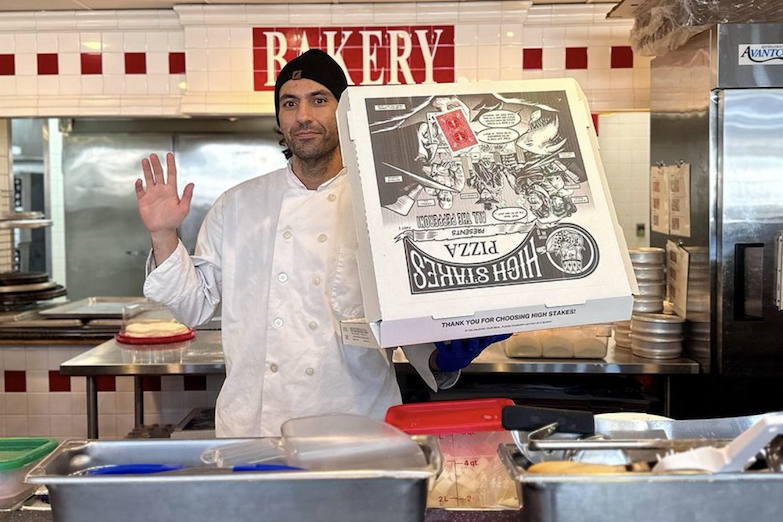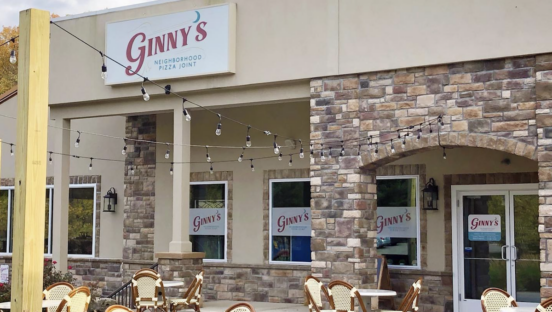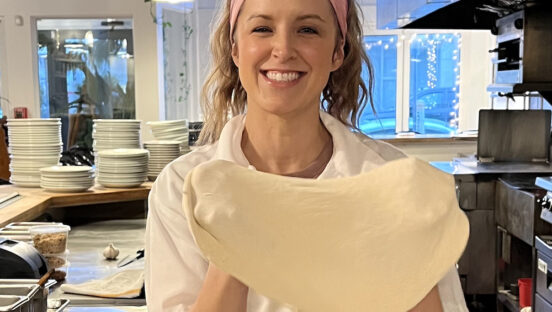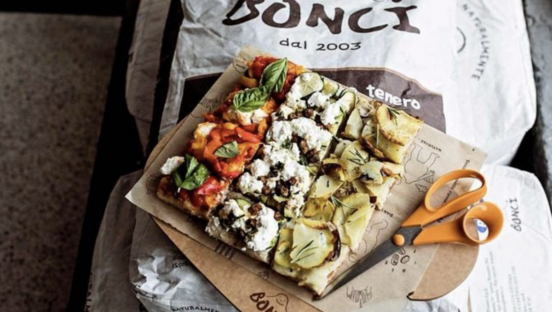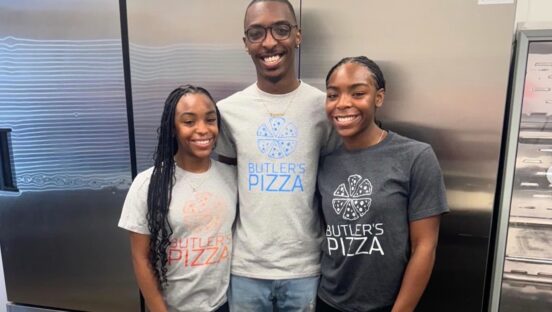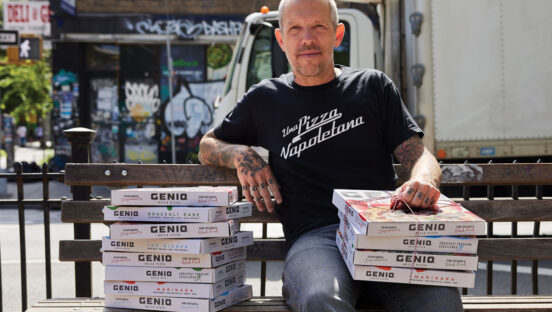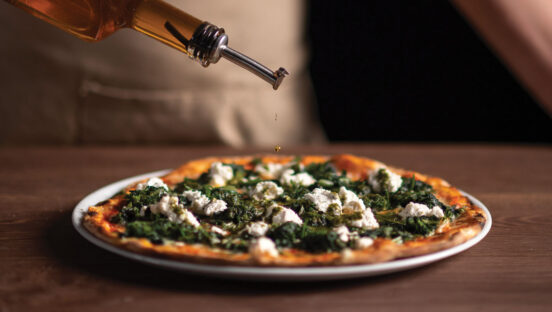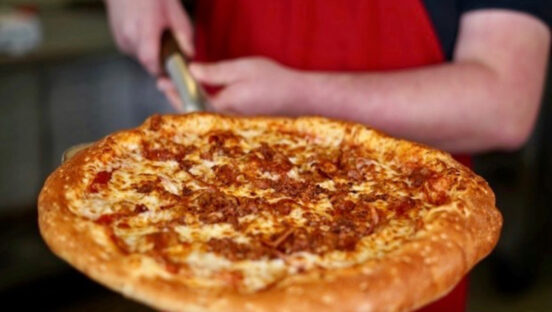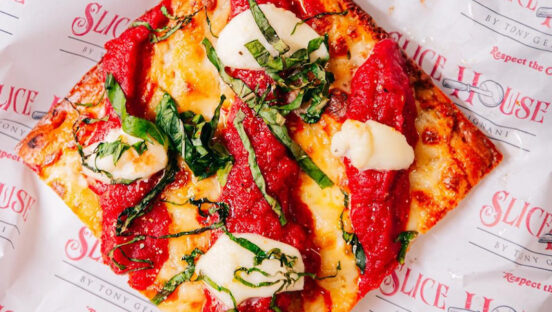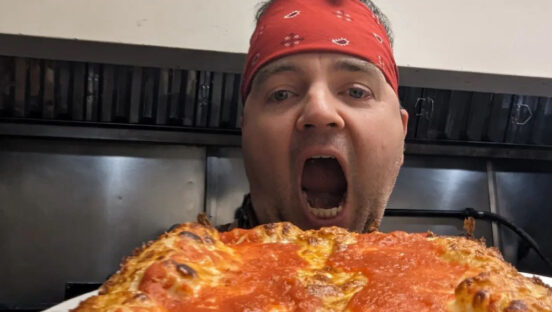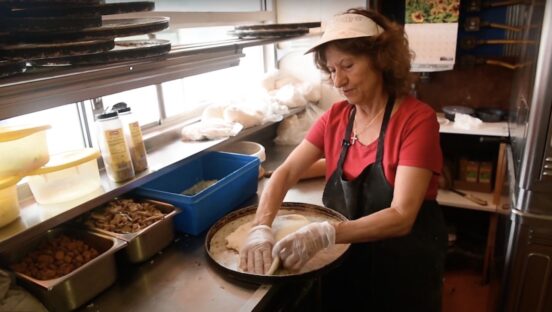There’s an unmistakable optimism in his tone when Zac Dokouzian talks about the business he opened in April 2023, High Stakes Pizza in Mesa, Arizona. He speaks in a calm, soothing voice as if he’s wearing a permanent, unbreakable smile.
Which makes it all the more jarring to hear him, when assessing how business has gone the first eight months he’s been open, say things like, “It isn’t over yet. But it’s getting to a point where it’s tough.”
Less than a year ago, Dokouzian left his cushy job in data analytics with a Fortune 500 company to chase a dream. He wanted to open a pizzeria, hoping he would find it more fulfilling than crunching numbers for an organization that makes over $100 billion in revenue per year. Pizza-making was a passion of his that he’d picked up about five years ago when he saw a random Neapolitan pizza recipe uploaded in the most unlikely of places: Github, a website dedicated to computer coding.
Related: How To Build a Smaller, Higher Profit Pizza Concept
“I was pretty burnt out,” Dokouzian said, speaking from his car on a 40-minute commute into the pizzeria—he lives a ways north of Mesa, which is an eastern suburb of Phoenix. “So I figured if [opening a pizzeria] gets me away from working in an office and doing something with my hands—more of a physical job—it would be more fulfilling. But I had no idea what I was getting myself into.”

Now Dokouzian has a pizza shop that serves New York-style pizza. His bestseller is, of course, a pepperoni pizza, and the shop does a popular take on a Supreme pie as well. The quality of the joint comes from a labor of love: he ferments his dough for 48 hours and uses fresh-sliced toppings. “It would be easier if we didn’t do that stuff,” he wrote on his website. “But we feel you’ll agree when you taste our pizza—there’s no substitute for hard work and experience.”
Here’s a look at some of the lessons Dokouzian has learned since opening up in April—and advice he’d give to somebody looking to open up their own.
Don’t Share Your Kitchen
One of the biggest regrets Dokouzian has is opening his pizzeria in a shared kitchen. This has limited his ability to post signage both outside and inside the pizza shop. It has also created other problems, like a rival pizzeria opening in the same shared kitchen just three months after his opened.
Dokouzian’s rationale for going the shared-kitchen route was that he couldn’t afford to rally up the cash for a brick-and-mortar store, and he thought word-of-mouth would be good enough to incrementally grow his business. He also figured doing DoorDash orders would be a good place to start, but found he was paying out up to 45 percent of his money when he made a sale on DoorDash—something he couldn’t justify continuing.
“I would say think about what your options are,” Dokouzian said. “Think more about a mobile food setup versus a shared kitchen or brick and mortar. Stuff is going to be a lot easier to figure out when you aren’t burning through money setting up your pizza-making process, streamlining vendors, hiring good people—all the while paying $5,000 in rent and supplies and all of that.”
Consider Mobile Business First
That brings Dokouzian to his next point. A shared kitchen is almost the worst of both worlds: High Stakes Pizzeria doesn’t have the signage and presence that comes with a physical location, and it also doesn’t have the advantage of setting up shop for swaths of hungry people hanging out at a farmers market or brewery.
“It’s easy to think, ‘I’m going to be putting out pizzas and word of mouth spreads real fast,’” Dokouzian said. “For the amount of money I’ve spent on rent here, I think I could’ve gotten a food truck fabricated. That seems like it would’ve been a more profitable way to start out.”
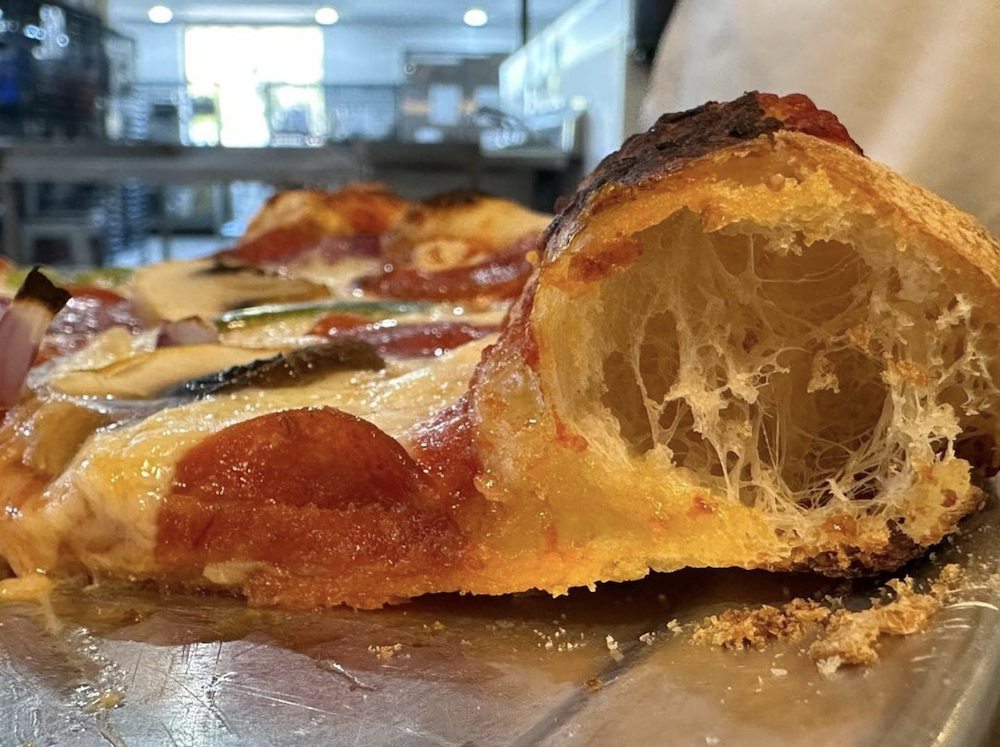
Trim the Fat
When his pizza shop first opened, Dokouzian was making baguettes, bagels and serving sandwiches on fresh-baked bread. They all drew rave reviews, but he found that the sales figures those items were doing in comparison to how labor-intensive and stressful they were was a lopsided relationship. While he hasn’t cut them from the menu entirely, he has scaled back how much he’s making them and how often they are available.
“There was so much prep work that it required and storage space that it took up,” Dokouzian said. “But, on the other hand, there have been things that surprised me, like the fact that my mozzarella sticks have sold so well.”
“How Will This Impact My Relationships?”
Dokouzian was aware that running a business would be incredibly challenging, but he may have been naive at the ways it would affect his personal life.
“I spent all of my time thinking about how I am going to make the best pizzas in town,” Dokouzian said. “Making the best dough, testing out ovens, all of that type of stuff. I think that’s all really important stuff to think about. But if I was going to do it again, I’d think more about stuff like: how is this business going to impact relationships? I think I could have done a better job speaking with the people in my life about what I was doing so it didn’t feel like such a spur of the moment thing.”
View this post on Instagram
What Happens Next?
High Stakes Pizza is still plugging along. Even if Dokouzian often speaks in the past tense about his business, it’s clear he’s wanting to fight to salvage the dream. He believes he’s a strong day—week, month—away from becoming profitable in the way he’d envisioned.
“We’re hopefully not too far off from breaking even, or being mildly profitable, even,” Dokouzian said. “That might be a good time to go to the bank and see if there’s an opportunity to get a loan or financing to secure a brick and mortar.”
Like so many other pizzeria owners, Dokouzian has found it’s very challenging to find adequate help in the kitchen. He’s cycled through cooks—the best one he had lasted a few months before dealing with some personal challenges that made their employment no longer tenable. That’s left Dokouzian in a cycle where if he spends money on advertising, he gets hit with volume that he can’t really deal with on his own. If he doesn’t spend money on advertising, he doesn’t always make enough sales to stay profitable.
The truth is, Dokouzian believes he’s already succeeded, even if it may not sound like that to others. One of the reasons he took on this challenge was because he wanted to prove to himself that he could do something that was fulfilling. So when he’s asked if he’s happier now, he has a characteristically nuanced way of answering.
“Happier? That’s a tough one,” Dokouzian said. “I’m for sure more fulfilled, and that was the main thing I was after. If you think about the things that make you happy, not any of them bring you long-term happiness. Ultimately, it’s powerful to see how much you can change your life if you really put in the work. It’s been really cool to see what I’ve been able to accomplish, even if it’s not necessarily running a successful pizza shop.”

